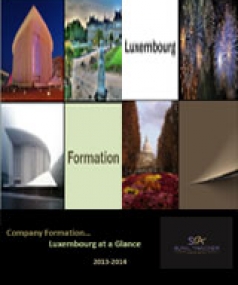Insolvency Regulations in Qatar
No one can reasonably deny that Medicare is headed for insolvency, and that Medicare's insolvency, if not rectified, will lead to the federal government's insolvency. — David Limbaugh
 The bankruptcy regime in Qatar is based on the principles contained in the legislation of many western jurisdictions. Financial institutions see it as vital to take security, wherever it is available, both inside and beyond the jurisdiction to support financial arrangements in Qatar. Examples include real estate, government, and corporate bonds, and physical assets such as plants and machinery. There are two concurrent bankruptcy regimes in Qatar. The first is the local regime, the provisions of which are contained in the Commercial Law No 27 of 2006 (“Local Regime”). The second is found in the QFC Insolvency Regulations 2005 and applies to bodies corporate and branches enlisted in the QFC (“QFC Regime”).
The bankruptcy regime in Qatar is based on the principles contained in the legislation of many western jurisdictions. Financial institutions see it as vital to take security, wherever it is available, both inside and beyond the jurisdiction to support financial arrangements in Qatar. Examples include real estate, government, and corporate bonds, and physical assets such as plants and machinery. There are two concurrent bankruptcy regimes in Qatar. The first is the local regime, the provisions of which are contained in the Commercial Law No 27 of 2006 (“Local Regime”). The second is found in the QFC Insolvency Regulations 2005 and applies to bodies corporate and branches enlisted in the QFC (“QFC Regime”).
The Local Regime
The Local Regime designates a bankruptcy administrator to manage the bankrupt’s affairs, business, and property with the intent to accomplish reimbursement of the bankrupt’s debts, as far as possible. The Local Regime contains no express provisions regarding foreign bankruptcy proceedings. This is distinct from some western jurisdictions, where there is clear provision for cross-boundary issues in case of bankruptcy and the manner in which these should be addressed. Qatar has not carried out the Model Law on Cross Border Insolvency of the United Nations Commission on Trade Law (UNCITRAL Model Law). It is subsequently unfit to seek the co-operation of the foreign courts in those countries which have carried out it, such as Australia and the US. Despite this, and considering the increasingly global nature of insolvency, commercial necessity has urged the national courts to give assistance to each other under a concept known as the comity of law. This implies that territorial integrity does not keep a court in one jurisdiction from giving help to a court in another jurisdiction in regard to assets located, or person resident within its territory. they might remit assets located in their own jurisdiction to help a Qatari bankruptcy administrator. However, if the courts in the location of the asset are reluctant to offer assistance, the bankruptcy administrator might need to start concurrent procedures. Nothing in the Local Regime recognizes between external and internal assets. It, therefore, follows that the bankruptcy administrator must be authorized to perform acts he deems necessary to seize the bankrupt’s foreign assets of the bankrupt’s estate for distribution to the creditors in the Qatari proceedings. While the Local Regime remains great untested it is hard to say unhesitatingly how effectively with which the administration of the bankruptcy procedure would manage cross-border aspects.
 The QFC Regime
The QFC Regime
The Qatar Financial Centre was laid out in 2005. It is a different legal jurisdiction from the State of Qatar similar to the Dubai International Financial Centre. The QFC has carried out its own bankruptcy regime through its Insolvency Regulations 2005. The QFC Regime depends on common law principles and is similar to insolvency legislation in England and Wales and other common law jurisdictions. The QFC Regime adopts an extensive approach to bankruptcy as it perceives non-QFC bankruptcy proceedings, including foreign proceedings. Provisions of the Insolvency Regulations express that the QFC tribunal will co-operate to the greater extent possible with courts of non-QFC representatives and might be willing to depend on the distribution of all or part of the bankrupt’s assets located in the QFC to the non-QFC representative. If it is fulfilled that the interests of the creditors in the QFC are adequately safeguarded. As far as seizing assets in different jurisdictions, the QFC Regime gives the insolvency administrator, or liquidator a wide authority to act outside of the QFC on behalf of a proceeding under the QFC Regime. Thus, the insolvency administrator is able to take any appropriate action to recover assets in other jurisdictions to realize their worth for the benefit of the creditors in the QFC proceedings. The QFC Regime is a more significant piece of legislation than the Local Regime. It offers more assurance to lenders and security holders in terms of the cross-border aspects of the bankruptcy procedure. The case law of the jurisdictions where upon which it is based likewise gives guidance as to the application of its principles in practice. The security holder should consider advising the Qatari administrator of bankruptcy of its foreign enforcement measures to prevent any attempts to take control of this asset. This will not be an issue for registered charges like mortgages however there may be certain types of security vulnerabilities to such action.
 Conclusion
Conclusion
Qatar’s economic growth, combined with different factors such as the view that confirmation of powerlessness to pay debts is a good business practice, means that very few bankruptcies have taken place in Qatar. While bankruptcy laws are to great extent untested and a lender can never be 100% fulfilled regarding the validity, value, and enforceability of its security, there are practical steps a prudent lender can take to protect themselves.
As an overall principle, security ought to be taken where the asset is located, and security reports will this way be represented by the laws of such jurisdiction. Appropriate legal advice and legal opinion obtained from a reputable local law firm in the jurisdiction should as to the enforceability of the security and the capacity of the entity providing such security, according on the circumstances
 عربي
عربي
 English
English Русский
Русский 官话
官话 português
português
 Türk
Türk 




